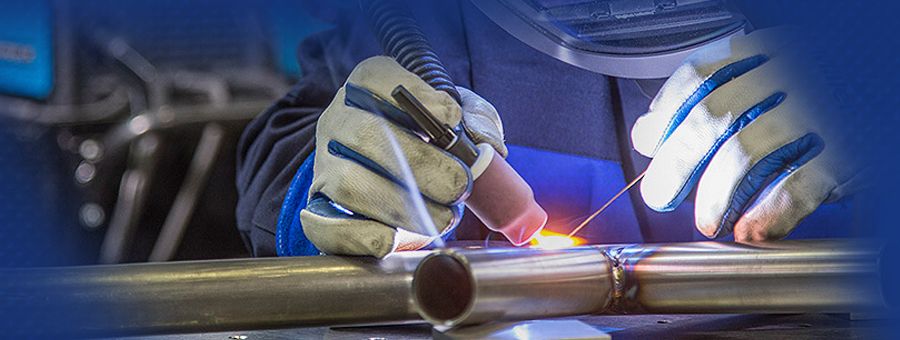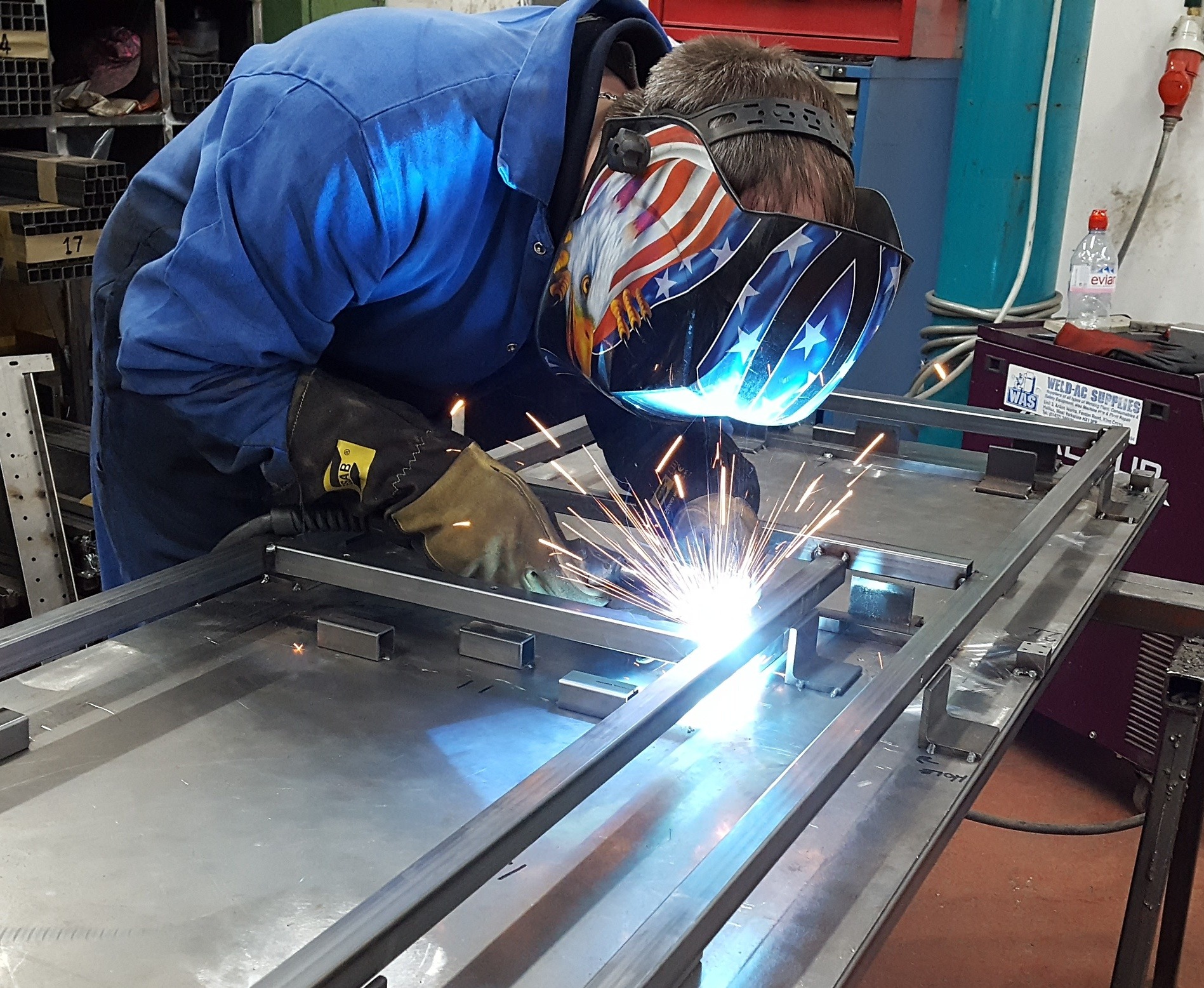Usual Welding Repair Issues and Exactly How to Address Them Properly
Welding repairs commonly experience a variety of concerns that can jeopardize the stability of the last product. Usual issues consist of insufficient penetration, porosity, and imbalance, to name a few. Each problem provides one-of-a-kind obstacles that require details approaches for resolution. Recognizing these concerns is important for welders intending to enhance their abilities and end results. This discussion will discover these common welding fixing problems and reliable techniques to resolve them.
Insufficient Penetration
Insufficient infiltration takes place when the weld steel stops working to completely fuse with the base material, resulting in weak joints and possible architectural failings. This problem commonly stems from not enough heat input, incorrect electrode angle, or inappropriate welding rate. Welders might run into poor penetration due to a mistake of the necessary criteria for a specific product thickness or type. Furthermore, contamination on the base material's surface can prevent reliable bonding, worsening the problem. To address inadequate penetration, welders must assure appropriate setups on their tools and keep a tidy job surface. Regular inspection of welds is advised to recognize any type of deficiencies early, enabling timely improvements and the avoidance of compromised architectural stability in bonded settings up.
Porosity
Porosity is an usual problem in welded joints that materializes as tiny gas bubbles trapped within the weld steel. This issue can endanger the stability of the weld, causing decreased stamina and prospective failing under stress. Belgrade Welding. Porosity typically arises from contamination, wetness, or inappropriate welding methods, which enable gases to escape right into the molten weld swimming pool. To address porosity, welders ought to assure appropriate surface preparation, keep a clean workplace, and utilize suitable welding criteria. In addition, picking the ideal filler material and protecting gas can alleviate gas entrapment. Regular evaluation and screening of welds can aid determine porosity early, ensuring prompt rehabilitative activities are taken, therefore preserving the high quality and reliability of the bonded framework
Imbalance
Imbalance in welding can develop from different variables, consisting of improper setup and thermal growth. Understanding the root creates is important for efficient resolution. Several modification strategies are offered to realign parts and ensure architectural integrity.
Root causes of Imbalance
Welding imbalance typically originates from a selection of underlying problems that can endanger structural stability. One main cause is incorrect fit-up of elements prior to welding, which can cause gaps and uneven surfaces. Variations in thermal expansion during the welding procedure can additionally result in distortion, especially if the materials being signed up with have different coefficients of development. In addition, poor clamping and fixturing may stop working to hold parts safely in position, causing motion throughout welding. Inadequately kept equipment, including welding machines and devices, might present variances in the weld bead, additional adding to misalignment. Operator error, stemming from inadequate training or experience, can likewise play a substantial role in creating misaligned welds.

Correction Methods Offered
Attending to imbalance properly requires a combination of restorative techniques customized to the specific issues handy. One common technique is making use of components or jigs to hold components in the appropriate position throughout welding, making sure regular positioning. Additionally, preheating the products can help in reducing distortion and boost fit-up. For significant misalignment, mechanical adjustment methods, such as utilizing hydraulic jacks or clamps, can be utilized to deal with the position prior to welding. Post-weld warm treatment may also be required to soothe anxieties brought on by imbalance. Cautious evaluation and adjustment throughout the configuration stage can avoid imbalance issues from ending up being considerable issues, promoting a smoother welding procedure and boosting total architectural stability.
Distortion
Distortion is a typical challenge in welding that can occur from numerous elements, including irregular cooling and heating. Comprehending the reasons for distortion is crucial for applying effective avoidance techniques. Addressing this concern not only enhances structural honesty however additionally boosts the overall top quality of the weld.
Causes of Distortion
When subjected to the extreme warmth of welding, materials frequently undergo adjustments that can cause distortion. This phenomenon largely emerges from thermal development and contraction throughout the welding procedure. As the weld area warms up, the product broadens; upon air conditioning, it acquires, which can develop inner tensions. Furthermore, unequal home heating across a work surface can aggravate these tensions, causing warping or flexing. The kind of material also plays a considerable function; metals with differing thermal conductivity and coefficients of growth might respond in different ways, resulting in unforeseeable distortions. Moreover, bad joint design and inadequate fixturing can add to imbalance during welding, raising the likelihood of distortion. Comprehending these causes is important for efficient welding repair service and avoidance strategies.
Prevention Techniques
Efficient avoidance methods for distortion throughout welding focus on controlling warmth input and ensuring correct joint layout. Keeping a regular heat input helps to lessen thermal expansion and tightening, which can bring about distortion. Making use of techniques such as pre-heating the workpiece can additionally minimize the temperature level gradient, promoting consistent home heating. In addition, choosing appropriate joint designs, such as T-joints or lap joints, can enhance security and minimize anxiety focus. Applying correct fixturing to secure the workpieces in area further aids in preserving positioning during the welding process. Staggered welding sequences can disperse warm a lot more evenly, preventing localized distortion. By applying these strategies, welders can substantially reduce the probability of distortion and boost the overall top quality of their welds.
Splitting
Cracking is a typical issue experienced in welding repair work, typically arising from various factors such as incorrect air conditioning prices, material selection, or insufficient joint preparation. The event of splits can substantially endanger the integrity of the weld, causing prospective failures throughout operation. To resolve this problem, welders have to initially examine the source, ensuring that products are suitable and appropriately chosen for the details application. Additionally, controlling the air conditioning price during the welding process is necessary; fast cooling can cause anxiety and cause fracturing. Proper joint design and prep work also add to reducing the danger. Carrying out these methods can enhance weld high quality and longevity, ultimately reducing the chance of breaking in ended up weldments.

Incomplete Blend
A significant issue in welding repair services is incomplete combination, which occurs when the weld steel does not effectively bond with the base material or previous weld passes - Montana Mobile Welding and Repair. This flaw can cause weak points in the joint, potentially jeopardizing the honesty of the welded framework. Aspects contributing to incomplete blend click to read include not enough warm input, improper welding technique, and contamination of the surfaces being joined. To address this concern successfully, welders need to ensure correct pre-weld cleansing and surface prep work, in addition to adjust their welding parameters to attain ample penetration and fusion. Routine examination throughout the welding procedure can additionally help identify incomplete combination early, permitting prompt restorative procedures to boost the total quality of the weld
Overheating
While welding repair services can enhance structural stability, overheating presents a significant difficulty that can result in product deterioration. Excessive heat during welding can change the mechanical homes of steels, leading to reduced strength, increased brittleness, and bending. This phenomenon is especially critical in high-stress applications where structural integrity is paramount. Identifying overheating can entail aesthetic examinations for discoloration or distortion, in addition to checking temperature throughout the welding procedure. To minimize the risks connected with overheating, welders need to employ appropriate methods, such as regulating heat input, readjusting travel rate, and making use of appropriate filler products. Furthermore, carrying out pre- and post-weld heat therapies can help restore product residential or commercial properties and improve the general high quality of the repair, making certain long-lasting performance and safety.
Frequently Asked Questions
What Are the Usual Indicators of a Welding Problem?
Just How Can I Check My Welds for High quality?
To check welds for high quality, one can use aesthetic assessments, ultrasonic testing, and radiographic approaches. Each technique guarantees architectural stability, recognizes flaws, and validates adherence to defined standards, inevitably enhancing the integrity of the welded joints.
What Security Preventative Measures Should I Take While Welding?
When welding, one must focus on safety and security by using appropriate individual safety tools, ensuring proper ventilation, safeguarding combustible products away, maintaining a clean office, and being mindful of surroundings to protect against mishaps and injuries.
Can I Fix a Weld Without Renovating the Entire Joint?
Repairing a weld without remodeling the entire joint is possible, depending upon the damage (Belgrade Fabrication). Strategies such as grinding, including filler product, or utilizing a welding procedure can effectively resolve particular defects while preserving the surrounding framework
What Tools Are Necessary for Effective Welding Services?
Crucial tools for effective welding repair services include a welding device, cord brush, mill, safety equipment, clamps, and filler products. Each device plays a crucial role in ensuring top quality and safety and security during the fixing process. Porosity typically occurs from contamination, wetness, or incorrect welding methods, which enable gases to escape right into the molten weld swimming pool. Poorly maintained equipment, including welding equipments and tools, may introduce disparities in the weld grain, further adding to imbalance. When subjected to the extreme warmth of welding, materials often go through modifications that can lead to distortion. Breaking is a common problem encountered in welding repairs, typically resulting from numerous elements such as inappropriate cooling rates, material choice, or inadequate joint preparation. A substantial problem in welding fixings is this hyperlink insufficient blend, which occurs when the weld metal does not adequately bond with the base material or previous weld passes.